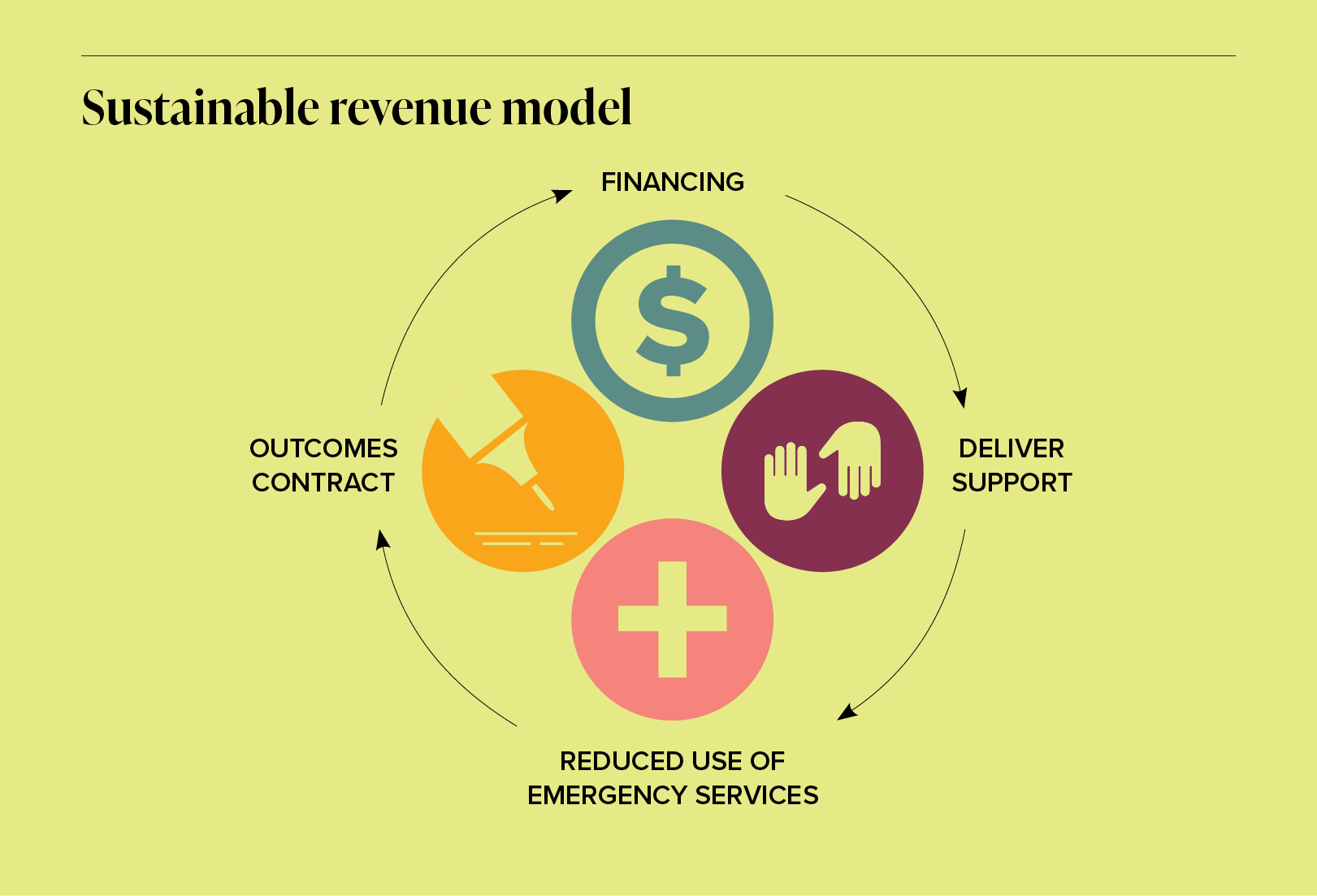Financing Social Solutions through Outcomes Procurement
Authors: Shaun Loney, Mark Rodford and Lucas Stewart of Encompass Co-op and Janet Lane and Justin Rodych of Canada West Foundation
In our latest report, Encompass Co-op and Canada West Foundation outline a novel way to expand the work of non-profits to reduce social problems. Through the use of procurement to engage non-profits, governments can shift from crises response and management to ending social problems.
Outcomes Procurement shows how government agencies such as the police can create “markets for solutions.” First, they establish the cost of their response to the people with whom they are in most regular contact and then they contract with the non-profit sector to reduce their workload for less cost. A new paper, Financing Social Solutions through Outcomes Procurement uses homelessness to demonstrate how the model works. It can also be applied to other areas including preventative health management, the reduction of domestic violence and enhanced employment training for individuals unable to get and keep a job.
The report shows Outcomes Procurement results in dividends to multiple stakeholders. Workloads are reduced for emergency service providers (such as police) and also for Health and Justice. The revenue model is sustainable because ending problems is less expensive than managing them. The model can address social problems without additional costs or risks to government.
The model allows all stakeholders to act in their own interest. Non-profit agencies can access new revenue streams to expand their interventions, foundations can get social AND financial impact from their investments and governments can finally address their growing workloads.
A Model for Outcomes Purchasing
- Government agencies that respond to people in frequent crises address their workloads by identifying cohorts of people with whom they are in constant contact and make public the cost to respond to that cohort annually.
- Non-profits determine if they can reduce the workload at a cost equal to or less than what is being spent. Because cohorts are typically in contact with multiple systems, the same non-profit intervention will reduce workload in several agencies. Rather than purchasing, for example, supportive housing, these emergency service providers agree to pay for the impact that supportive housing has on their system and only AFTER the outcome has been delivered.
- The anticipated revenue streams can be combined and used by the non-profit to arrange a risk-free loan from an impact investor that wishes to add social impact to the financial returns on their investments. Such financiers may include foundations, credit unions and First Nations Trusts.
- A new paradigm that moves money towards preventing problems rather than treating them is created.

Read the full report

